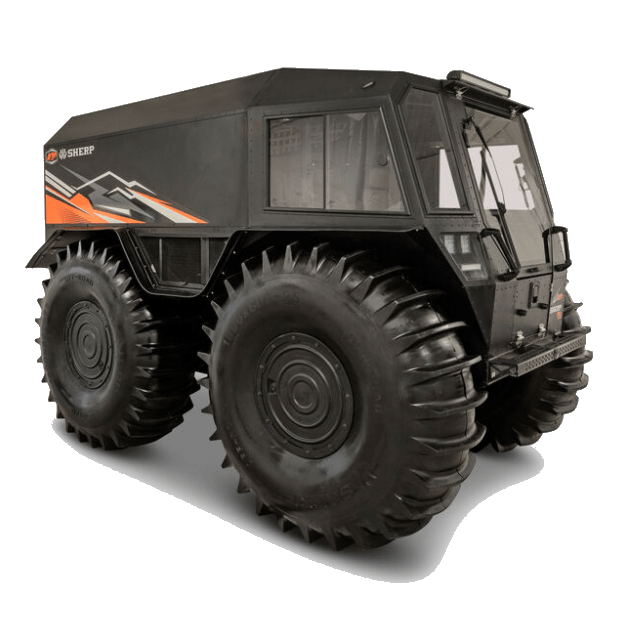Sherp ATV, Argo & Hydratek
This is a comparison between the Sherp ATV and the Argo. There is more to a rescue than just getting there. Getting there in a timely manner, keeping rescue workers from being fatigued in route, having the room to carry the needed equipment and protecting the patient in transport are all important factors. Fleetistics believes there is little benefit to the Argo platform other than price for search and rescue operations.
1. Neither vehicle has suspension but the tire pressure in the Sherp can be lowered which makes the ride smoother.
2. The Argo uses tracks and Hydrotek uses propellers for propulsion. Propellers are very limited in real operations other than a clean lake. They are subject to debris and almost never used in the demo videos. The paddle wheels on the Sherp never get clogged by debris.
3. Hydratrek has a wet payload of 3,000 lbs and dry of 1,600 lbs, the Sherp 2,000. All units have amphibious trailers.
4. The Argo has 6-8 tires to maintain plus option tracks, Hydratek has tracks and the Sherp has 4 wheels.
5. The Hydratrek max speed is 14/5 mph on land/water vs Sherp at 27/4 mph.
6. The standard Argo & Hydratek have an open cockpit with an upgrade for a hardcover. The Sherp has a hard top and the top can be removed on the pickup version for unique situations. Protection is important for patient care, element protection and responder fatigue.
7. The Argo product line less flexible to adapted in the field to the conditions or terrain. The Sherp can inflate or deflate the ultra low-pressure tires to match the traction and driving surface needs. Tire pressure is between 1 and 3 PSI on the Sherp.
8. The Argo track system is more expensive to maintain than the Sherp’s 4 large tires.
9. Any track system is less reliable, there are simply more moving parts and points of failure. If a track breaks in the field, fixing it may be impossible. Tires can be patched to get you home.
10. The seating in the Hydratrek and all Argos is limited. The videos clearly depict the few seats available and the lack of patient space. In an emergency the Sherp can transport 11 people! 2 in front, 3 either side in the area and thee on the rear floor.
11. The Argos angle of attack uphill is about half that of the Sherp at 3′. The lower angle of attack makes is more likely to get stuck exiting a river, over a frozen lake, crossing a log or traversing rocks. View the Argo on ice.
12. The track system is as tough or tougher on the environment for a zero turn. Even traveling straight the large footprint is comparable to the Sherp low-pressure tire.
13. The high-end Argo cost about half that of the Sherp starting at $119,00. The Hydrtek is about $95,000 for the base unit.
14. Patient care conditions overall are far better in the Sherp and Hydratek than the Argo. The enclosed back provides seating for rescue workers with a stretcher between them. The shelter keeps the sun, wind, rain, tree limbs and bugs off patients and responders. At -30F getting an IV started in an Argo will be almost impossible since exposed to the elements.
15. The ground clearance of the Argo is much lower than the Sherps 23″ or Hydratek’s 25-27″. This and 63″ tires prevent the Sherp from getting hung up in deep ruts.

Recent Comments